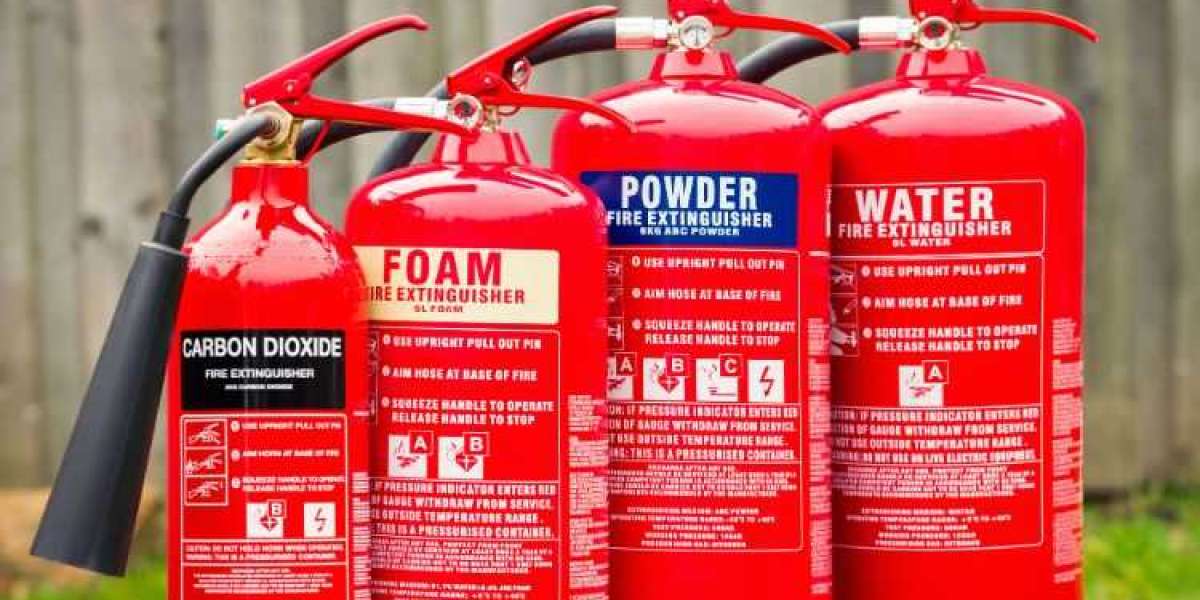The global portable fire extinguisher market size value was estimated at USD 4.20 billion in 2023 and is anticipated to grow from 2024 to 2032 at a CAGR of 6.5%. Fire safety is a critical aspect of modern infrastructure, whether it’s residential, commercial, or industrial. Among the various fire safety tools available, portable fire extinguishers play a pivotal role in the first line of defense against fires. This blog post delves into the market dynamics, segmentation, regional analysis, and competitive landscape of the global portable fire extinguisher market, providing comprehensive insights from 2024 to 2032.
Market Segmentation
By Product Type
Portable: Portable fire extinguishers are designed for easy mobility, allowing users to swiftly address fires. They are versatile and commonly found in homes, offices, and vehicles, making them essential for general fire safety.
Knapsack: Knapsack fire extinguishers are carried on the back, offering flexibility and ease of movement in rugged terrains or large facilities. These extinguishers are particularly useful in forestry, agricultural settings, and industrial environments where quick mobility is crucial.
Wheeled: Wheeled fire extinguishers are equipped with wheels for easy transportation, especially useful in large industrial complexes, warehouses, and airports. Their large capacity makes them suitable for tackling significant fire incidents.
By Extinguishing Agent
Dry Chemical (Powder): Dry chemical extinguishers use various chemicals to suppress fires, including monoammonium phosphate and sodium bicarbonate. They are highly effective against Class A, B, and C fires, making them versatile for different environments.
Foam: Foam fire extinguishers are ideal for Class A and B fires, particularly those involving flammable liquids. The foam creates a barrier between the fire and the fuel, preventing re-ignition.
Carbon Dioxide (CO2): CO2 extinguishers are effective for Class B and C fires. They displace oxygen and cool the flames, making them suitable for electrical fires and flammable liquids without leaving residue.
Others: Other extinguishing agents include water mist, clean agents, and wet chemical extinguishers. Each type is designed for specific fire classes and environments, enhancing overall fire safety.
By Fire Class
- Class A: Fires involving ordinary combustibles like wood, paper, and cloth.
- Class B: Fires involving flammable liquids such as gasoline, oil, and grease.
- Class C: Fires involving electrical equipment.
- Class D: Fires involving combustible metals like magnesium and titanium.
- Class K: Fires involving cooking oils and fats.
By Application
Portable fire extinguishers find applications across various sectors, including residential, commercial, industrial, and institutional settings. Each application demands specific features and performance standards to ensure effective fire suppression.
Regional Analysis
North America The North American market is driven by stringent fire safety regulations, high awareness levels, and significant investments in safety infrastructure. The region is expected to witness steady growth, with the U.S. and Canada being major contributors.
Europe Europe's market growth is propelled by strict safety standards and robust regulatory frameworks. Countries like Germany, France, and the UK are key markets due to their advanced industrial sectors and commitment to fire safety.
Asia Pacific The Asia Pacific region is anticipated to experience significant growth due to rapid urbanization, industrialization, and increasing awareness about fire safety. Major markets include China, India, and Japan, which are investing heavily in safety equipment.
Latin America Latin America's market is growing, driven by economic development and increased industrial activities. Brazil and Mexico are notable markets, with rising investments in safety infrastructure.
Middle East and Africa The Middle East and Africa are witnessing growing demand for portable fire extinguishers, fueled by infrastructure development and increasing awareness about fire safety. Key markets include the UAE, Saudi Arabia, and South Africa.
Market Dynamics
SWOT Analysis
Strengths
- Increasing awareness about fire safety.
- Technological advancements in fire extinguishers.
- Robust regulatory frameworks ensuring compliance.
Weaknesses
- High initial costs of advanced fire extinguishers.
- Limited awareness in developing regions.
Opportunities
- Growing urbanization and industrialization.
- Increasing investments in safety infrastructure.
- Emerging markets in Asia Pacific and Latin America.
Threats
- Intense competition leading to price wars.
- Economic downturns affecting purchasing power.
Competitive Landscape
The global portable fire extinguisher market is highly competitive, with key players focusing on innovation, product development, and strategic partnerships. Leading companies include Johnson Controls, Amerex Corporation, Minimax, and Kidde, which are investing in research and development to enhance product efficiency and reliability.
Future Outlook (2024-2032)
Market Growth Projections The market is projected to grow at a CAGR of 6.5%, driven by increasing fire safety awareness, stringent regulations, and technological advancements.
Technological Advancements Innovations such as smart fire extinguishers with IoT integration and eco-friendly extinguishing agents are expected to drive market growth.
Regulatory and Safety Standards Adherence to international safety standards and regulations will continue to shape market dynamics, ensuring the adoption of high-quality fire extinguishers.
Read More Our Other Reports:



